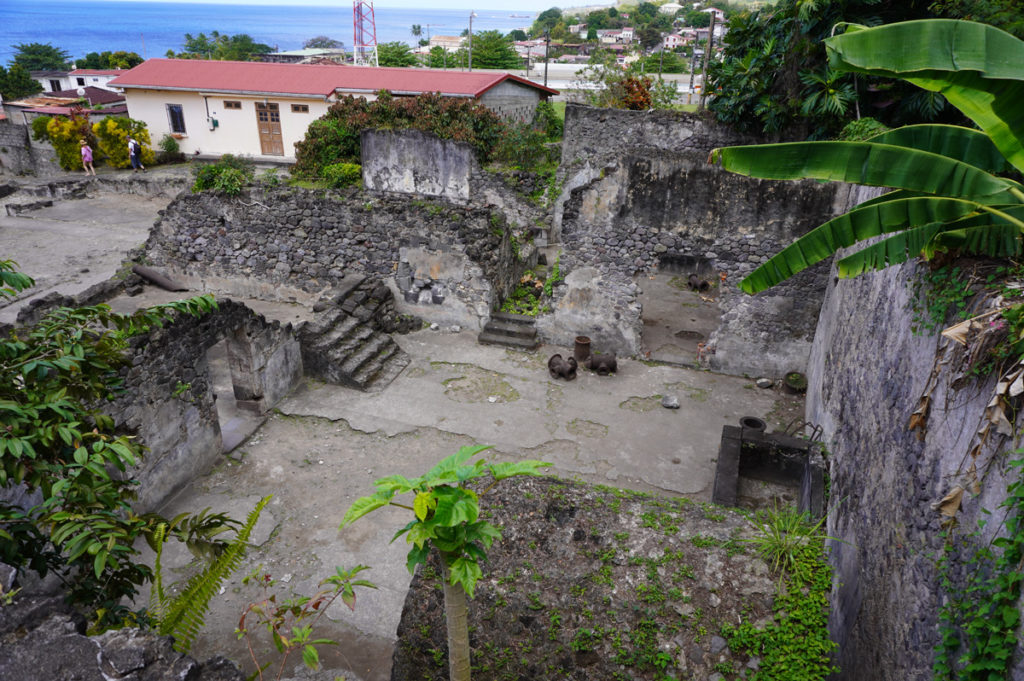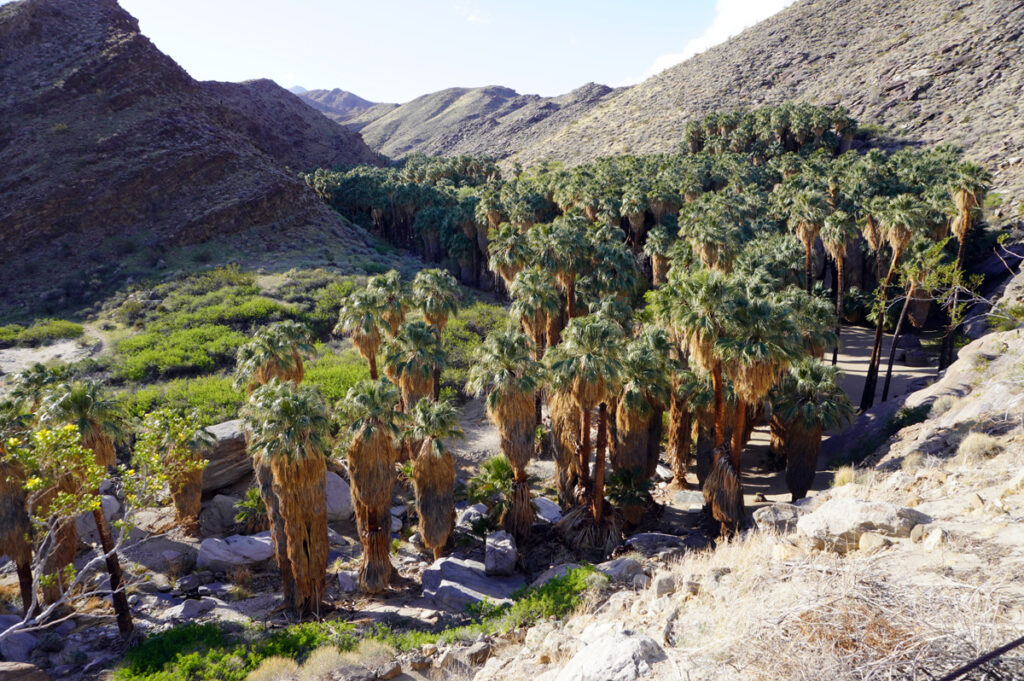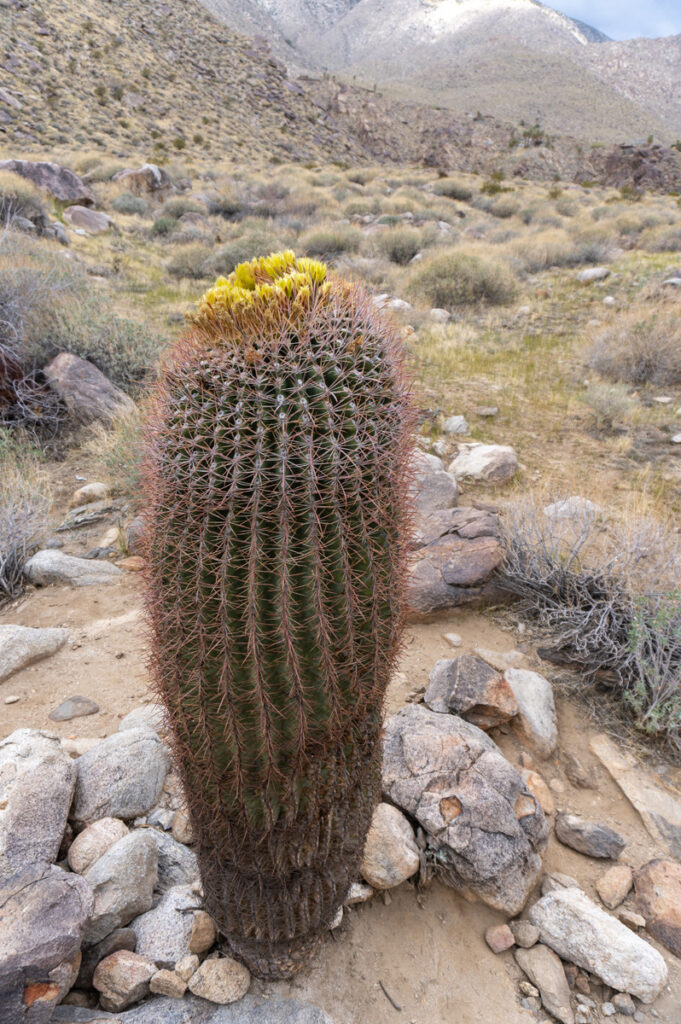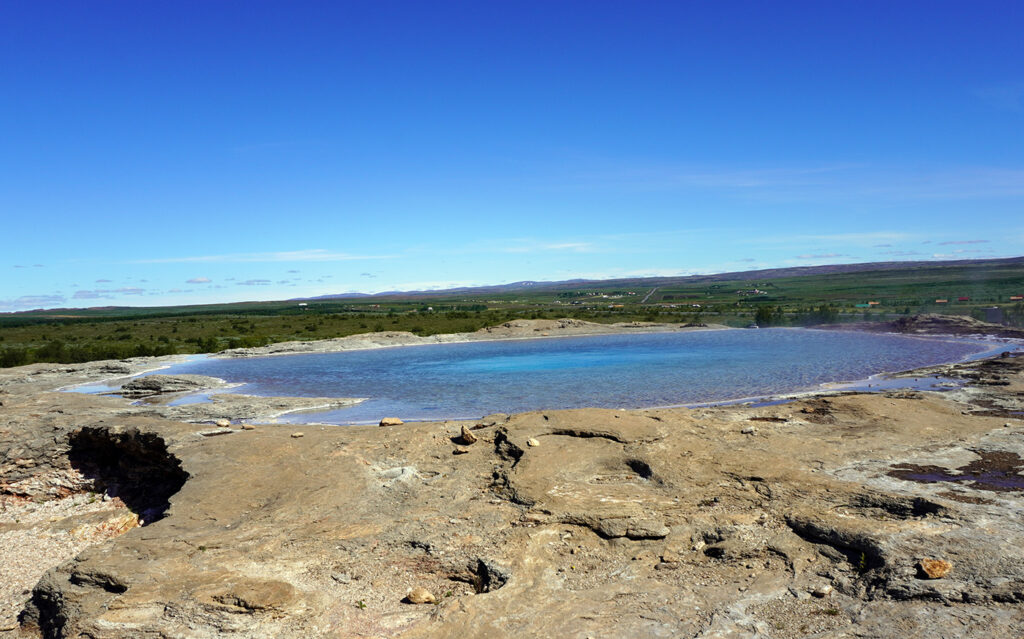 Preserved Ruins, St Pierre
Preserved Ruins, St PierreOn 8th May 1902, the thriving town of St Pierre, Martinique, was abruptly destroyed by a pyroclastic surge from the Mount Pelée volcano. Around 25,000 people died within minutes.
Sadly, the authorities had been fully aware of the many warning signs of an eruption at Mount Pelée. They had carefully determined that various intervening hills would prevent lava flows from reaching St Pierre. Farmers from near the volcano had been evacuated into the imagined safety of the town. To reassure the populace, the Governor of Martinique himself had arrived. Tragically, the authorities were quite correct about the lava flows, but unfortunately science at that time did not understand the risk of a pyroclastic flow, where clouds of hot ashes and toxic gases can be expelled very abruptly at speeds over 100 km/hr. It was just such a flow that engulfed the town.
 Survivor’s Prison Cell
Survivor’s Prison CellOver the following century, the town has slowly been repopulated. Various sections of the ruins have been preserved as tourist attractions, most notably the old theater and the former prison. One of the handful of survivors of the disaster was a prisoner held in a strongly built stone cell at the rear of the prison. He was found days later by rescuers with severe burns and went on to make a career recounting his ordeal at Barnum & Baileys traveling circus.
There is a small, but interesting, Memorial Museum describing life in the town before the eruption and then the abrupt events of the day itself.

Earth Sciences Research Center
A little North of the town is the modern, stylish and earthquake-proof Earth Sciences Research Center. This keeps a careful watch on the current status and mood of Mount Pelée. There are many other volcanoes scattered in the Eastern Caribbean, but fortunately, the signs and risks are better understood nowadays and the museum shows several example of where towns have been successfully evacuated in the face of imminent eruptions.
Postscript: I was stopping off in Martinique as part of a planned trip to the European Space Center in French Guiana. But the day after my visit to St Pierre, I got email that the Center was being closed to visitors due to increasing spread of COVID-19. So I cut my trip short and started heading home. It may be a while before I can travel again…

























